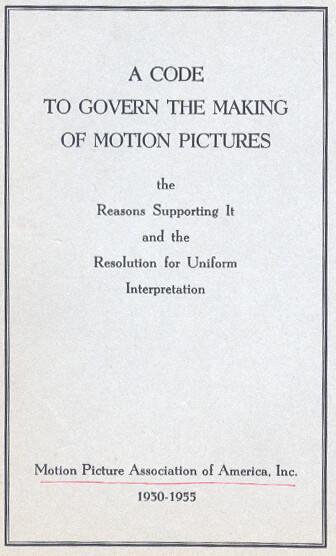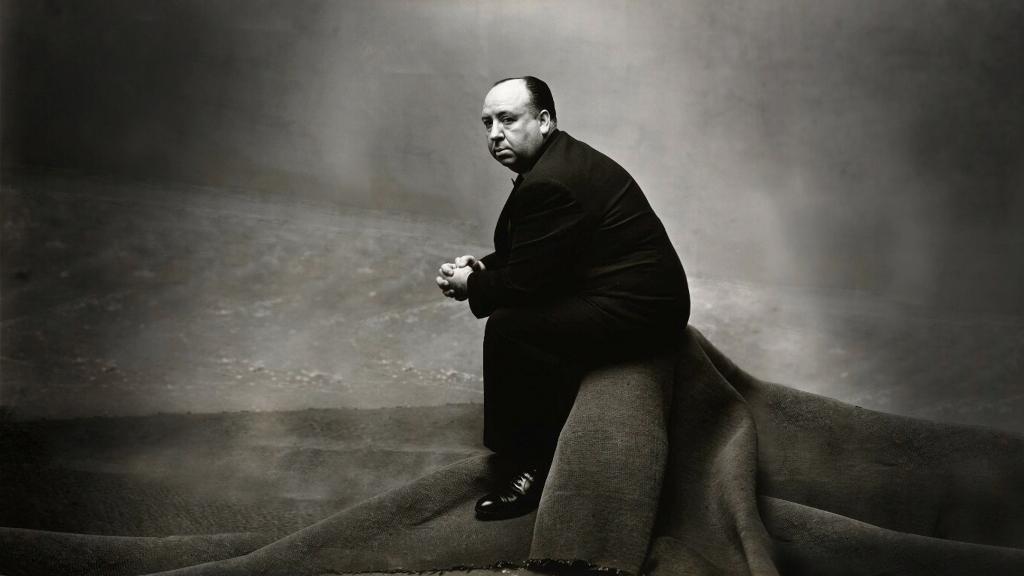If you’ve read my articles for The Epoch Times, you probably have seen me make reference to the Motion Picture Production Code, the Production Code Administration (PCA), and Joseph I. Breen. Very rarely do I fail to mention that the Production Code, commonly called the Hays Code, was the set of moral guidelines which governed Hollywood during its Golden Era, held accountable by the PCA as long as Joseph Breen was in charge (1934-1954). As those familiar with my writing will confirm, the Code’s enforcement is my favorite topic and my angle for reviewing most old movies.
The only biography written about Mr. Breen so far is “Hollywood’s Censor: Joseph I. Breen & The Production Code Administration” by Thomas A. Doherty, which was published by Columbia University Press in 2007. You can buy a used copy on Amazon or eBay, find it at a library, or buy the book online to read on a Kindle. I bought my copy six years ago, and it provided a wealth of information about the Code. It also introduced me to other sources on the subject, which have proven invaluable in my own research. Since no book published before or since has covered Joseph Breen’s life so thoroughly, I decided to review this biography for those who might be interested in discovering it themselves. Although I admire the work behind it, there are several things about it which, as a historian, I don’t like.

A Thorough Job
In his forward, which he cleverly calls “Opening Credits,” Thomas Doherty asserts that this book is “not a biography of Joseph I. Breen but a cultural history of Hollywood and America with the life and character of Breen as the spine of the story.” This is an apt description, since the biographical details of Joe Breen’s life are creatively woven among the historical facts about the cultural, political, and religious phenomena which led to the formation, success, decline, and ultimate disenfranchisement of the PCA. With the academic thoroughness one would expect from a university professor like the author, Mr. Doherty made the book an easy one to study. It includes the complete text of the Code in the appendix, notes on abbreviations used in the book, a detailed list of works cited by chapter and page number, and a comprehensive index of films, names, and organizations referenced throughout the book. It’s primarily a textbook, but relevant pictures of people and films mentioned are sprinkled throughout, many of which are very rare.Few people like to read history books for enjoyment. How interesting is 300 pages of names, dates, and facts listed in chronological order as in the most mundane school books? Fortunately, Mr. Doherty is not only an accomplished historian but a skilled writer. He crafted an engaging narrative when telling the story, often framing it like a movie script to fit the Hollywood theme. The book begins very strongly with a Prologue describing the night of the 1954 Academy Awards ceremony, at which Joseph Breen received an honorary Oscar for his special services to the film industry. Instead of starting his story with the scandals, talkies, and political posturing which led to the adoption of the Production Code, Doherty chose to begin with a captivating snapshot of Hollywood’s “last glimpse of a man who, more than any other actor, director, or producer in the room, had stamped his vision on Hollywood cinema.”
“Hollywood’s Censor” was not the first book of its kind on the subject. Books like “Censored Hollywood: Sex, Sin, & Violence on Screen” by Frank Miller (1994), “Pre-Code Hollywood: Sex, Immorality, and Insurrection in American Cinema 1930–1934” by Gregory D. Black (1996), “Sin in Soft Focus: Pre-Code Hollywood” by Mark A. Vieira (1999), and “The Dame in the Kimono: Hollywood, Censorship, and the Production Code” by Leonard L. Leff and Jerold L. Simmons (2001) paved the way with books unearthing the long-forgotten history of censorship and self-regulation in Hollywood. Even Doherty himself penned a book about pre-Breen Era films in the 1990s, “Pre-Code Hollywood: Sex, Immorality, and Insurrection in American Cinema 1930–1934” (1999). However, his later book stands out because of its extra research about the backgrounds of the Code’s key players, particularly Joseph Breen. He provided never-before-seen photographs, quotes, and facts about Breen’s life and family by getting in touch with his descendants, particularly his granddaughter Mary Pat Dorr.

Hollywood’s Censor?
Although I admire Doherty’s work in this book, there are some things about it which bother me. The title says it all: “Hollywood’s Censor.” No book states more clearly than this one that the Production Code Administration did not regard itself or the Code to be censorship; it was the antidote for the censorship which plagued Hollywood in its Pre-Code years. It was Doherty’s writing which convinced me to never use the word “censorship” or “censor” in connection with Joseph Breen and his work at the PCA, yet he followed in the footsteps of every author which preceded him in slapping a “Censored” sticker on the title of his book. I’m sure Mr. Doherty would agree with me that Joe Breen would be very displeased to know that “Hollywood’s Censor” is the title of his only biography to date.Secondly, I must take issue with the cover. It features a picture of Joseph Breen, obviously unposed because he is smiling, with two attractive young women in harem girl costumes. The people in the picture are in black and white, but parts of the background were colored blue, matching the font. Those familiar with terminology of the earlier 20th century will recognize the shading’s significance. Blue represented obscenity because the hottest color of fire is blue. This cover doesn’t show Mr. Breen frowning down upon the blue-tinted scene but laughingly engaging in it.
Its description inside the book is as follows: “Joseph I. Breen looks over the harem garb worn by Burnu Acquanetta (left) and Helen Pender in Universal’s ‘Arabian Nights’ (1942). The original cutline read: Nice Work If You Can Get It. (Urban Archives/Temple University).” This cover implies that the Production Code Administrator enjoyed surveying the risqué costumes and content which he kept from the rest of the world. You truly can’t judge a book by its cover, since the text makes it clear that Breen’s work at the PCA was a sacred but strenuous duty, never a dirty pleasure. The inside fold credits the cover design to Lisa Hamm, but I don’t know whether Doherty approved the design or it was a marketing plot to sell more books.

Creative License
Any historian of the Code is in debt to his predecessors. Just as Thomas Doherty was aided in his research by the earlier work of Leonard Leff and others, I wouldn’t have a fraction of the knowledge I’ve acquired about Mr. Breen if Doherty’s book hadn’t paved the way.If you, too, are interested in delving deeper into the fascinating subject of Joseph I. Breen’s life, I highly recommend “Hollywood’s Censor.” Although I disagree with some of the author’s phrasing choices and editorializing, you won’t find a more thorough book on the Code. Perhaps the day will eventually come when the Hollywood historians acknowledge that Joseph Breen was not Hollywood’s censor but its self-regulator and wise moral compass.





